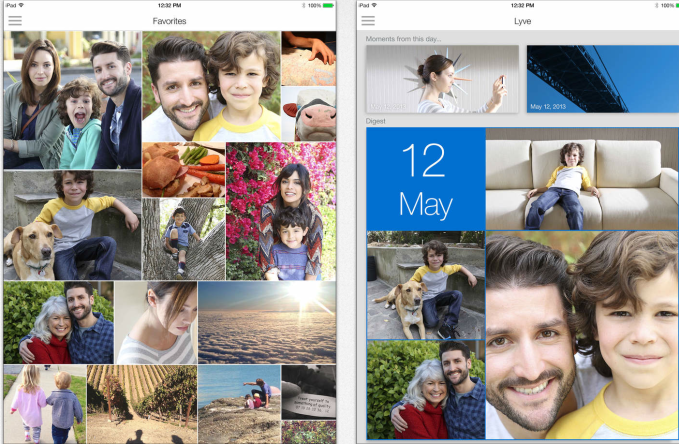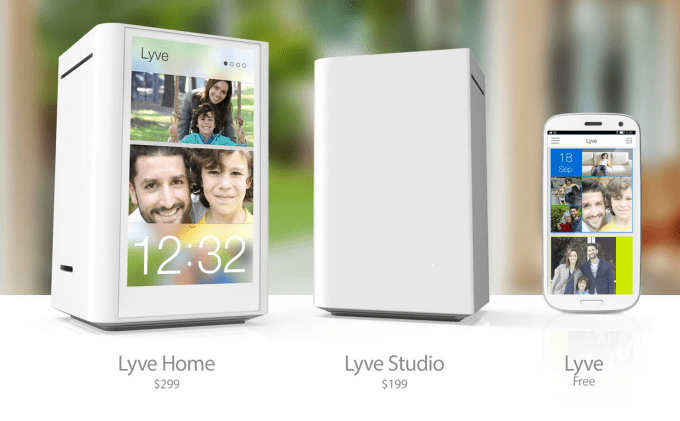Accessing your entire photo and video collection from any device can still be a challenge today, especially if you have your media spread out across a variety of local hard drives as well as various cloud services where you have to pay for storage – potentially limiting how much of your collection is hosted online at any given time. Lyve Minds, which launched its first product – a home storage box for digital archives – earlier this year, has been working to change that.
Now, the company is rolling out its latest solution, in the form of a new application called “Lyve” which works as a tool to combine your disparate libraries, de-duplicate images, and more – with no need for additional hardware.
Expanding Beyond Hardware Solutions
Lyve Minds was founded by Tim Bucher, a tech industry vet who has held a number of roles at major companies over the years, including engineering director at Steve Jobs’ NeXT Computer, SVP of Macintosh engineering at Apple, lead architect at video game maker 3DO, lead engineer and architect at Sun Microsystems, and VP of engineering and operations at WebTV, sold to Microsoft.
In May, his company launched a hardware device, called “Lyve Home,” offering consumers a way to store their photo and video collections locally on Lyve’s own hardware, then view those images via a suite of free apps designed for iOS, Mac, or Android devices.
Beyond simply offering a means of accessing your photos without necessarily having to host them on today’s sometimes pricey cloud storage services, the Lyve software is also capable of eliminating duplicates when you’re viewing your images on a remote device, as well as rendering them in a format that’s designed for the screen size of the device you’re using to view them at the time.
The Lyve App
But with the debut of the new Lyve application, you can bypass the need to purchase one of Lyve’s hardware devices and instead back up your media collection just by installing the app on the devices you currently own.

The product sounds a lot like Loom – the photo archiving solution acquired by Dropbox – which also offered a cross-platform suite of apps that made all your images from desktop, tablet and smartphone devices accessible in mobile-optimized formats. (Loom was shut down after its acquisition, as Dropbox now offers its own photo storage app called Carousel.)
With Lyve, available now for iOS, Android, Kindle Fire and Windows, you simply install the app on all the devices you use, and the photos and videos are collected and organized on your behalf. As new content is added, it’s presented in a single library, organized by date (newest first) and viewable as one timeline.
The main homescreen displays your collection in a tiled format that somewhat resembles Windows Phone’s “live tiles” look-and-feel. It’s made up of differently sized photo squares and thumbnails that animate, flipping around to show you other items in that date’s gallery. Next to each gallery, is a brightly colored tile displaying the date for that collection.
Lyve also includes a “timeline” section, where photos are laid out in a horizontally scrollable format, again organized by date.
You can also star photos and videos to favorite them, view their metadata, delete them, view your “just added” items, and share photos and videos via email, SMS or social media.
The company continues to offer its hardware-based devices for those who want to store their collections on locally attached hard drives that are accessible by Lyve’s mobile apps. (Lyve Home is the larger of the two drives at $299, while another called Lyve Studio is $199. They offer 2 TB and 500 GB, respectively.)

The Lyve app, however, is free, and imports from your various personal devices, in addition to online services like Dropbox and Google Drive.
“Other companies offer free solutions only up to a certain amount of capacity,” explains CEO Tim Bucher. “Lyve’s free solution is unlimited though. You can have as many devices, as many photos, and as many videos as you want. The difference is that we don’t store the originals in our service – we only store the mobile-optimized versions,” he says.
Consumers, of course, can store their original photos elsewhere – on local hard drives, within folders or media applications like iPhoto; (optionally) on Lyve’s own storage devices; or on other cloud services.
Lyve’s app simply makes the photos accessible in optimized formats, for free, wherever you are.
The Lyve apps are available for download here.
